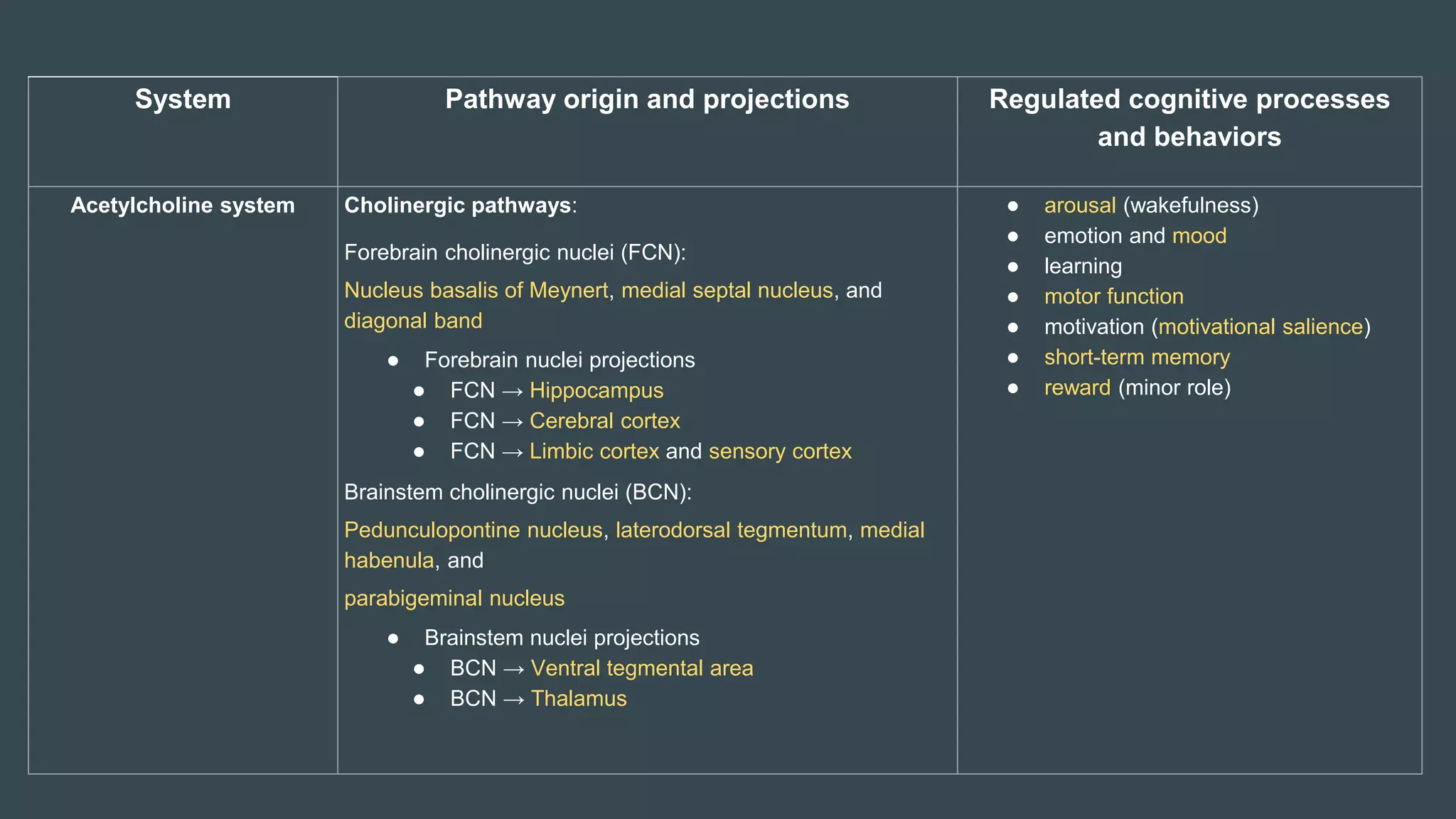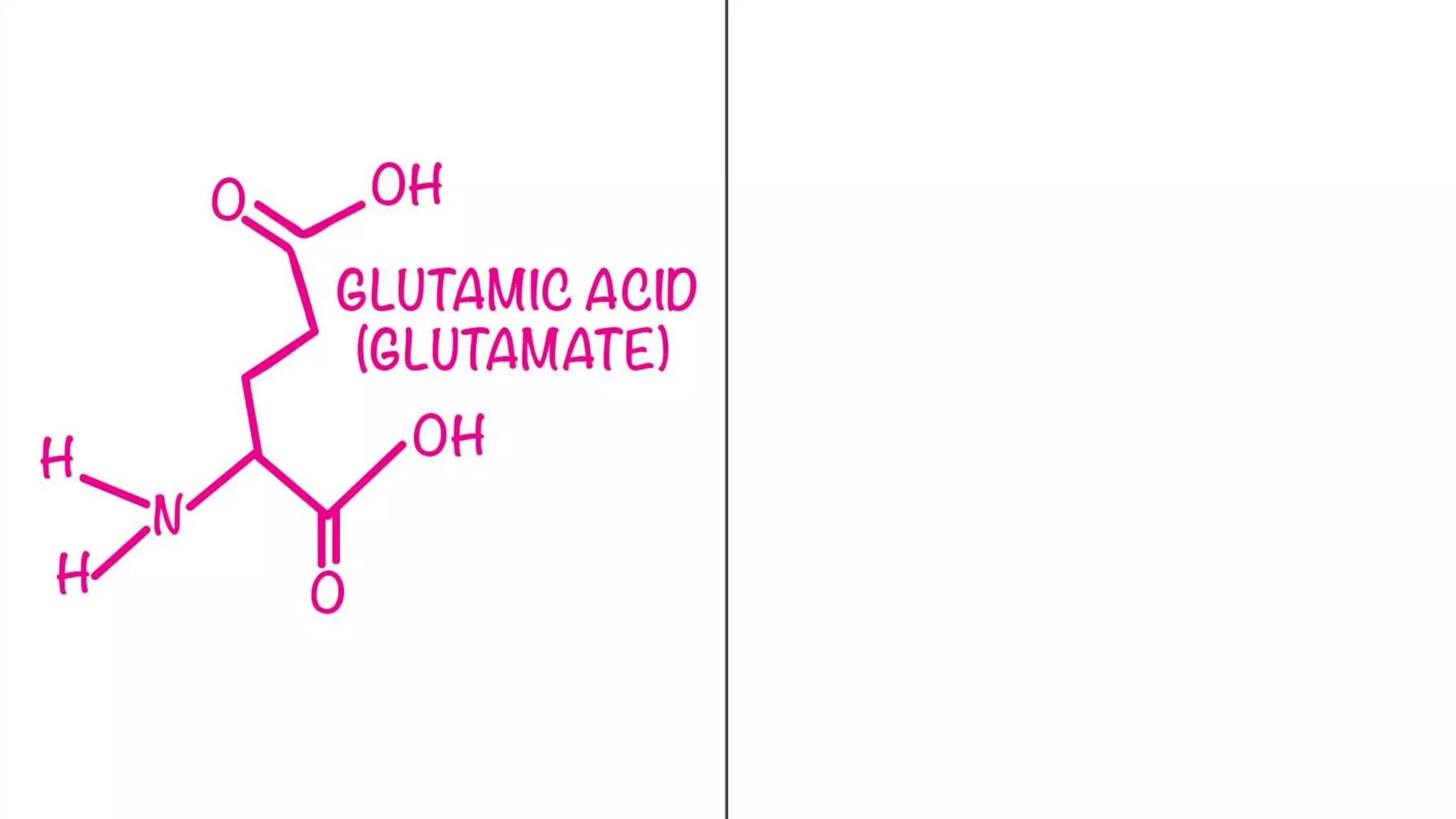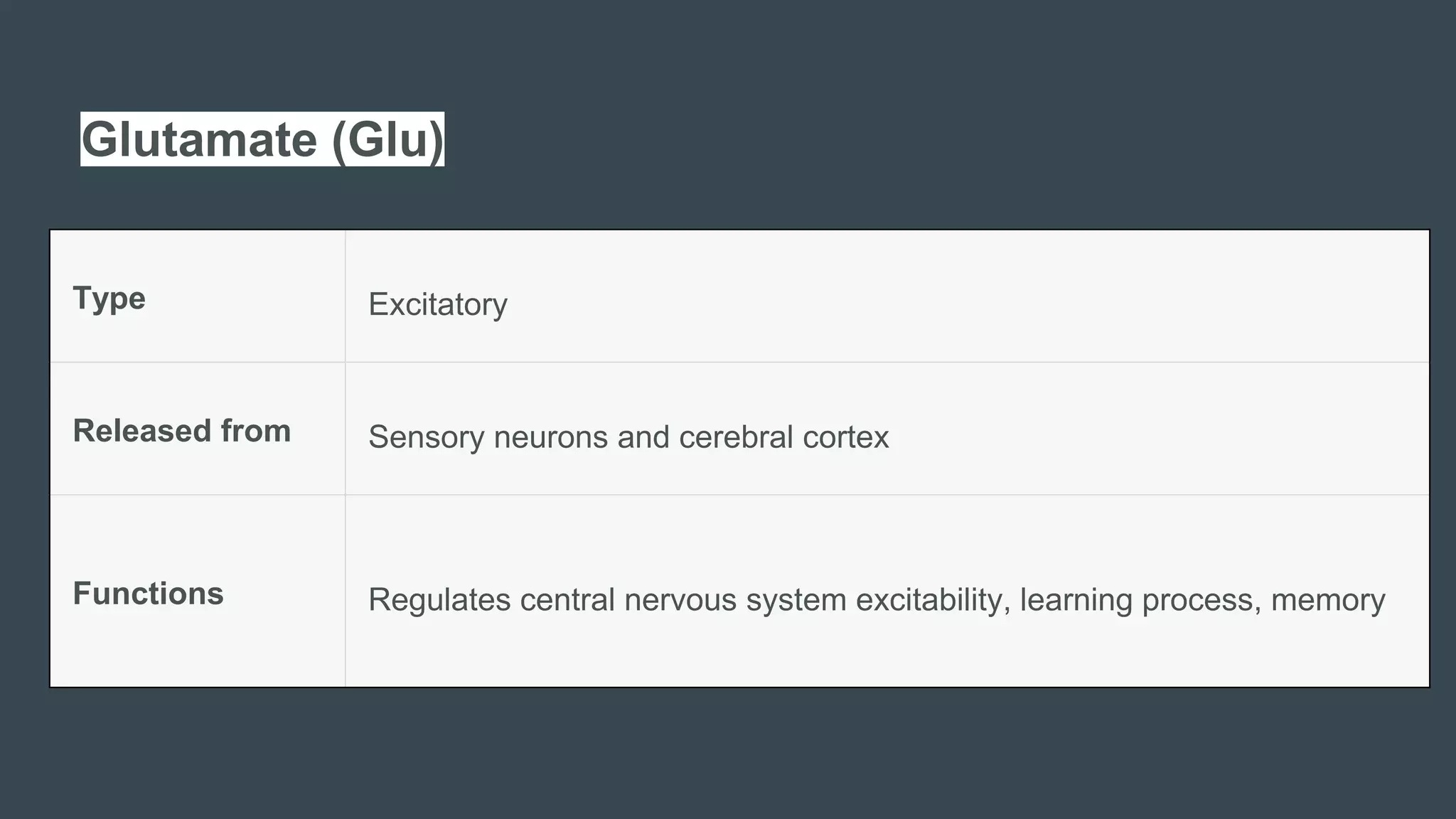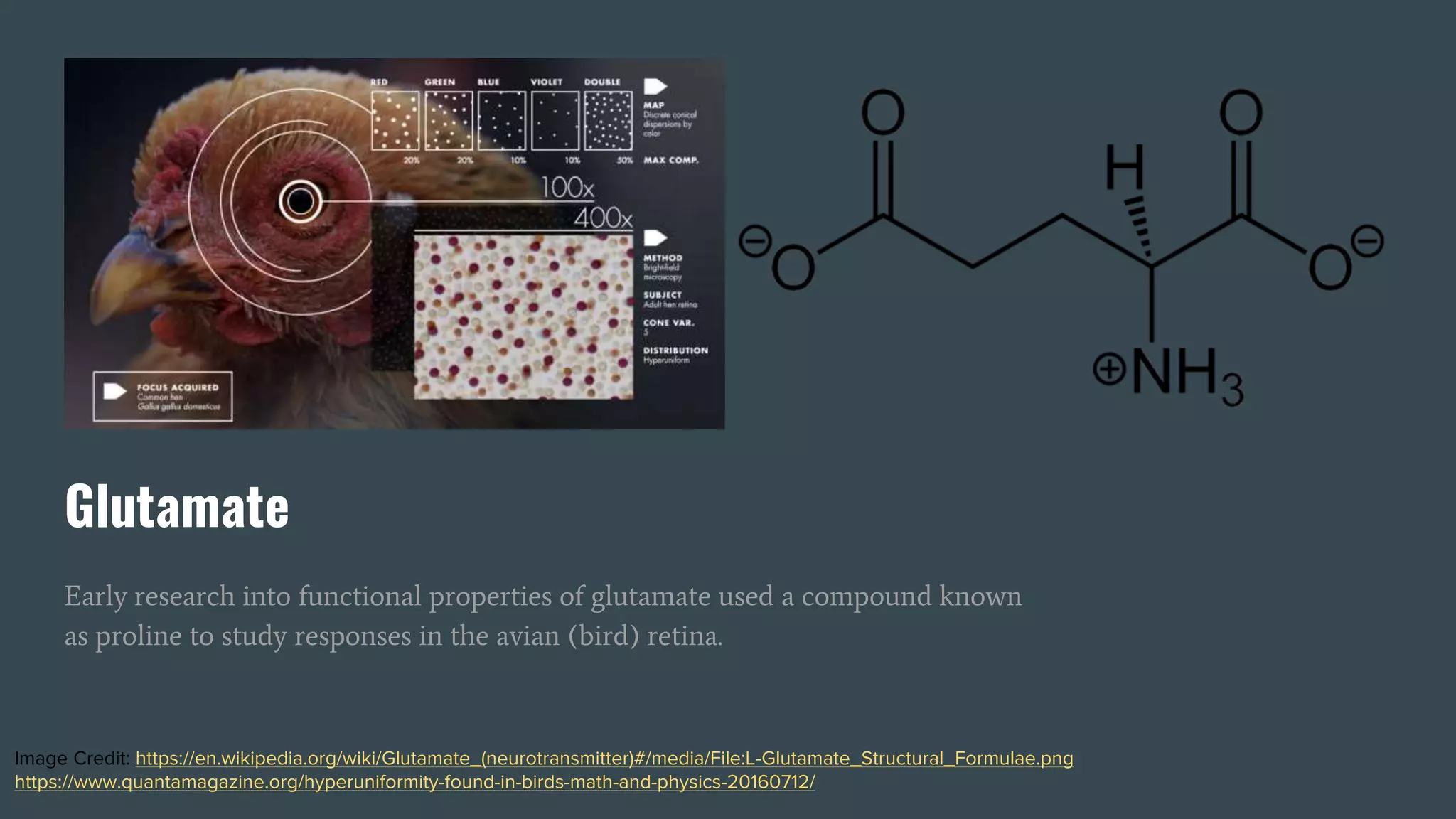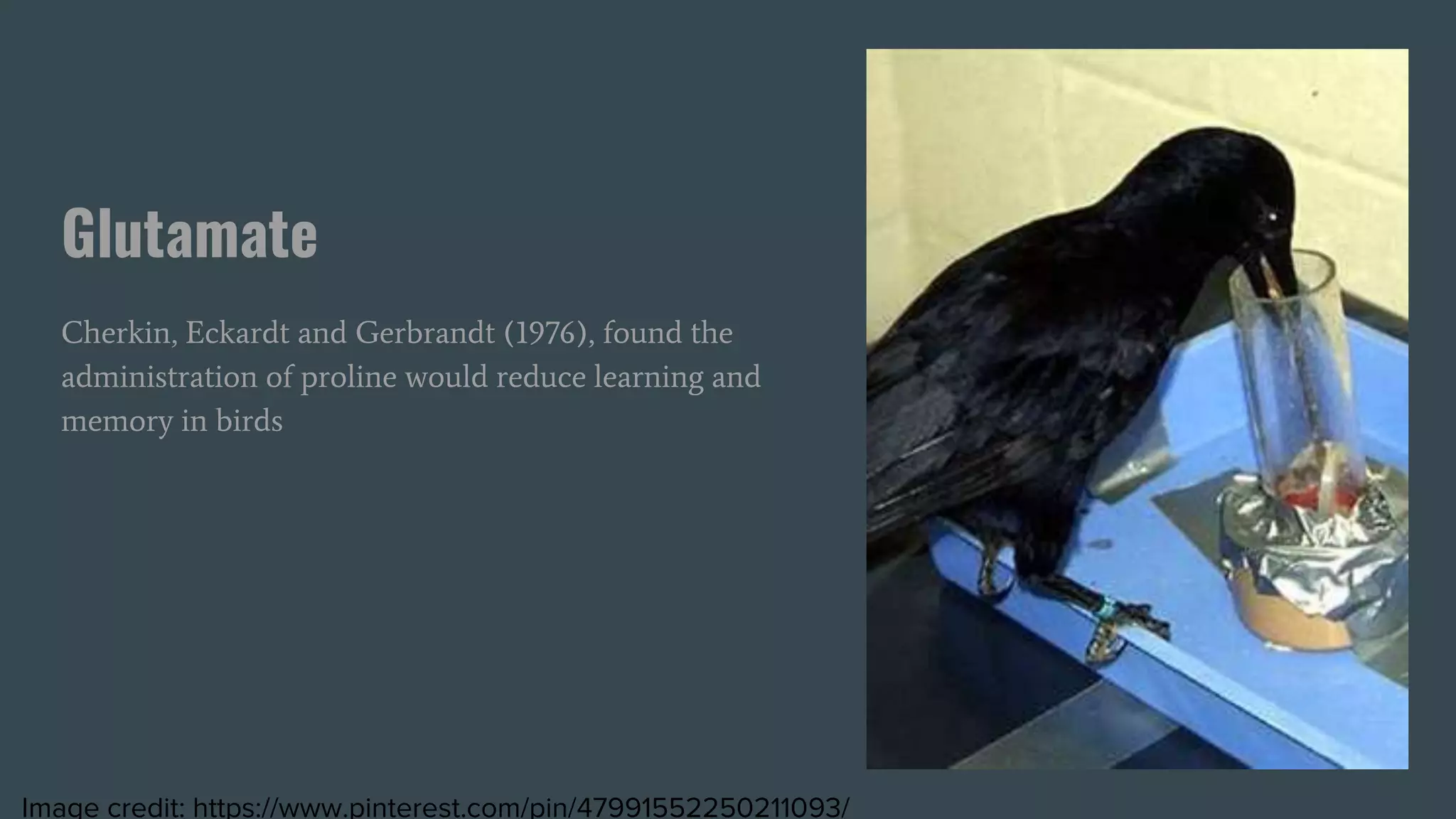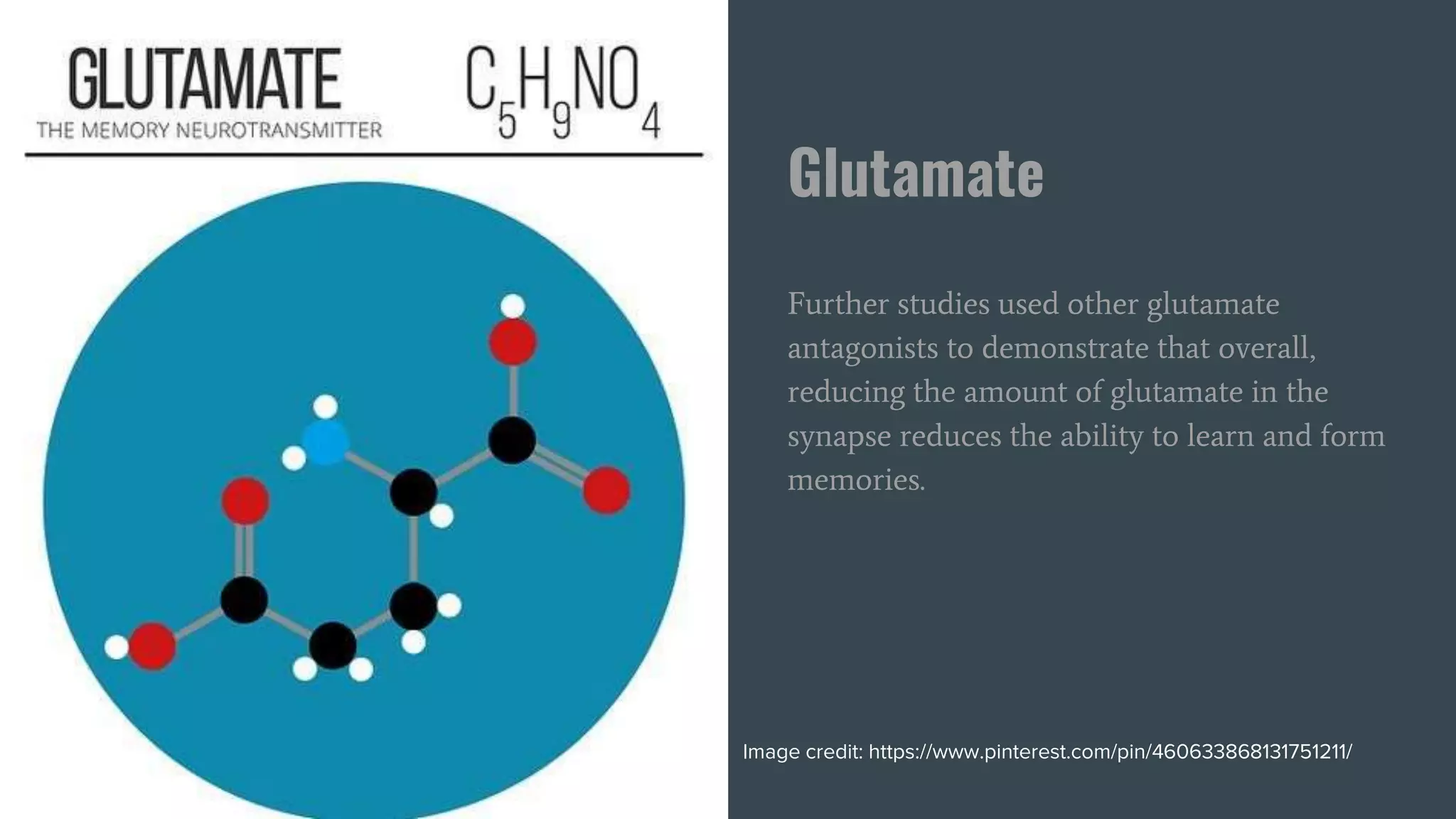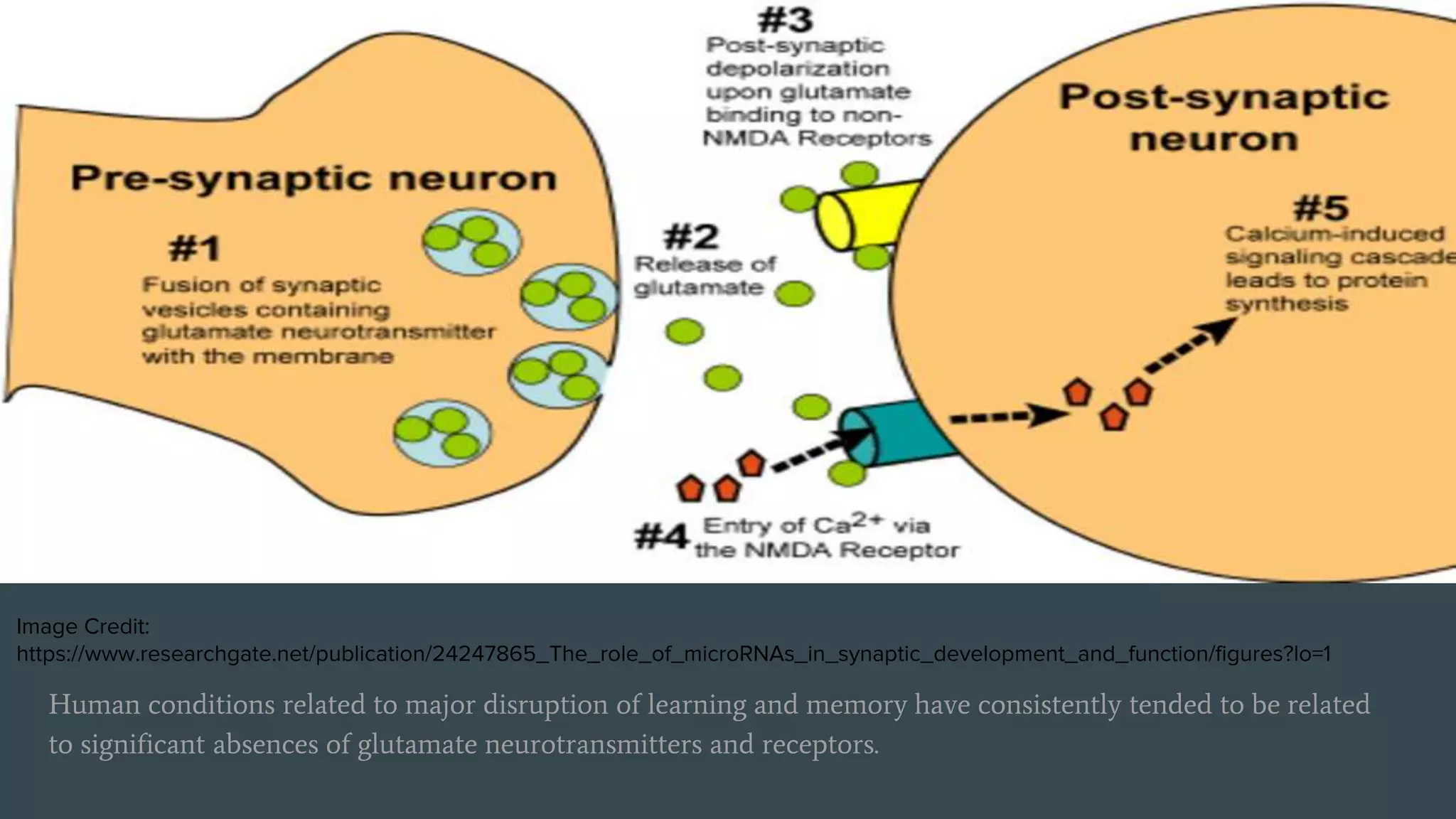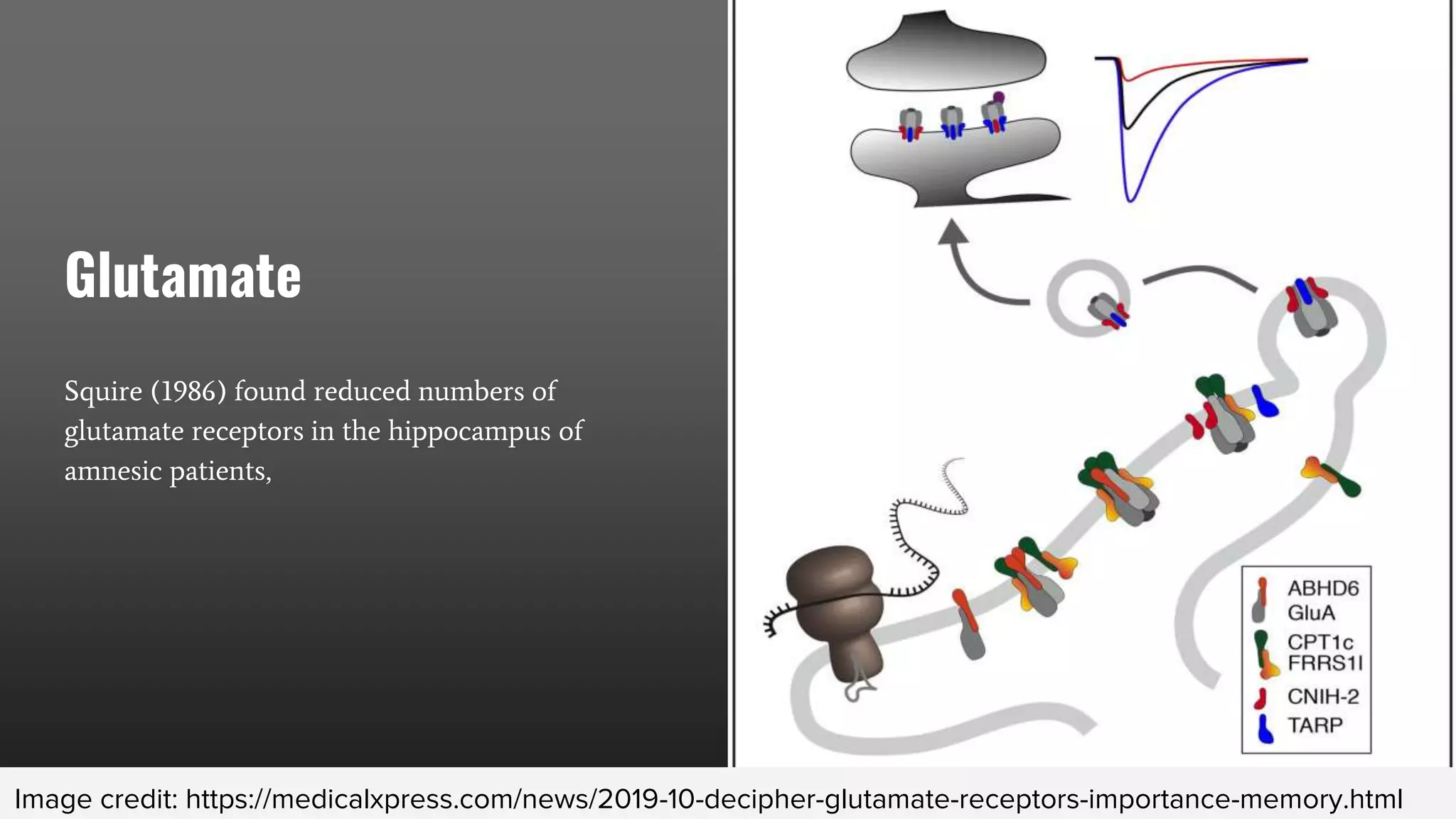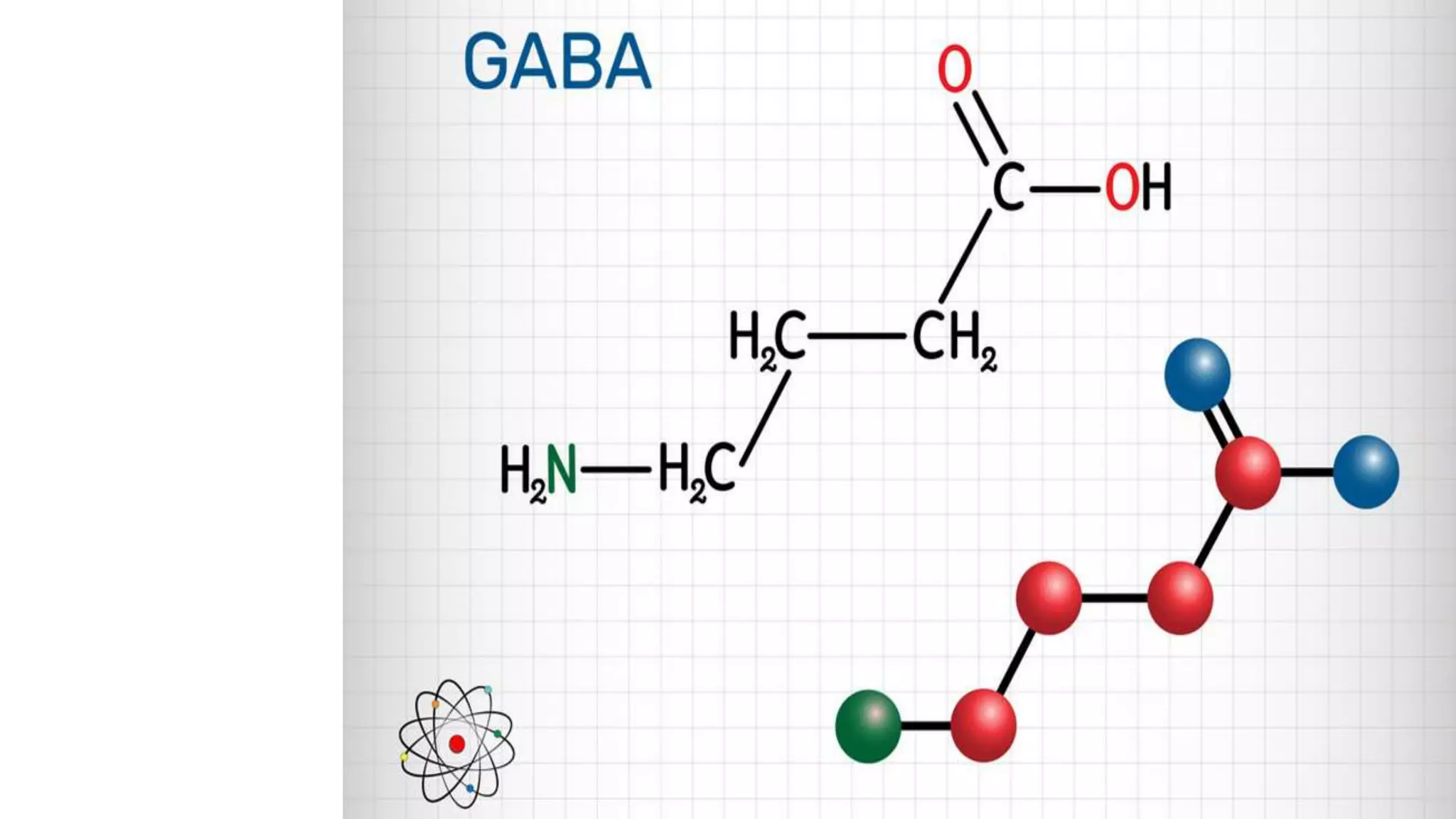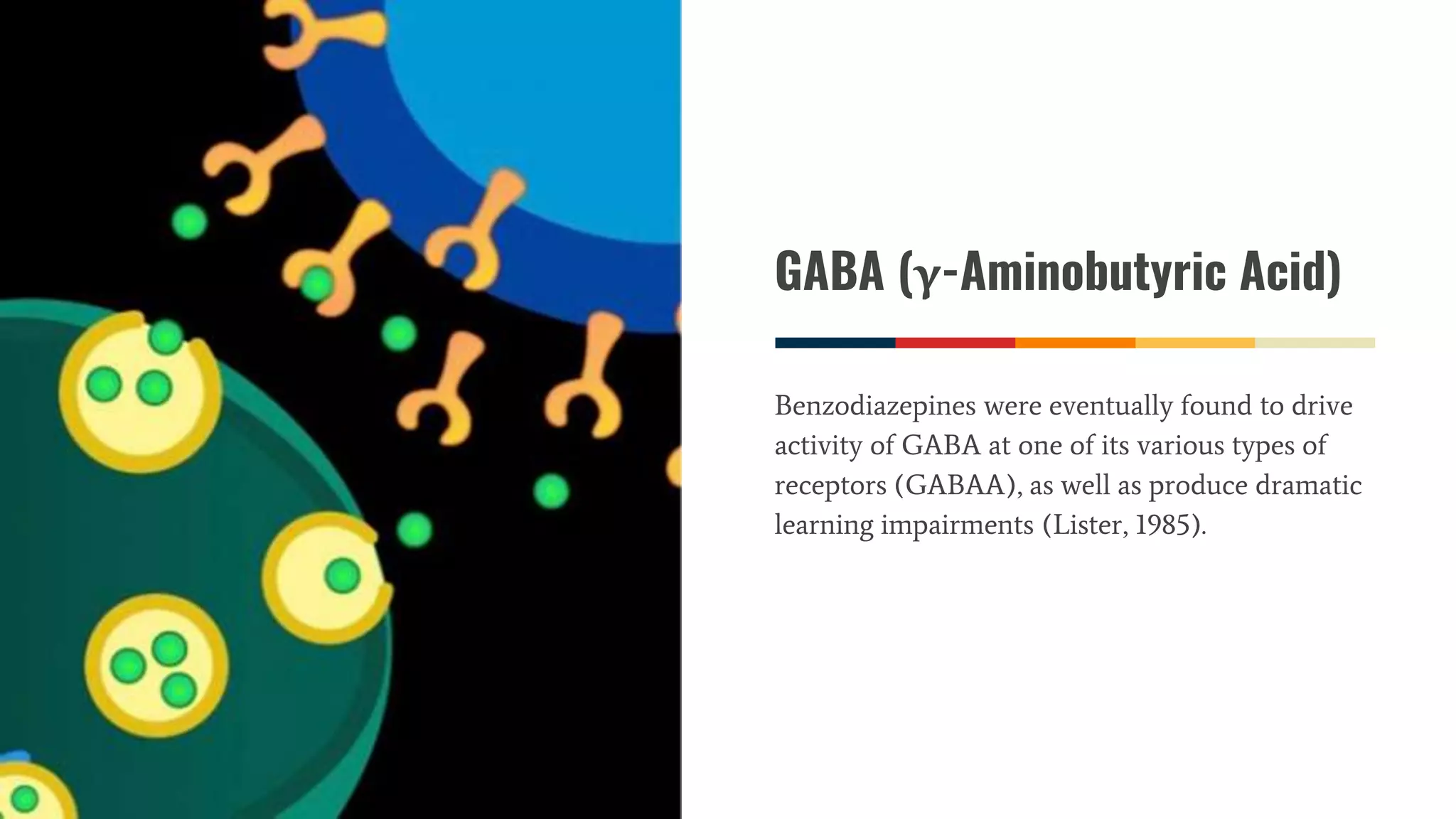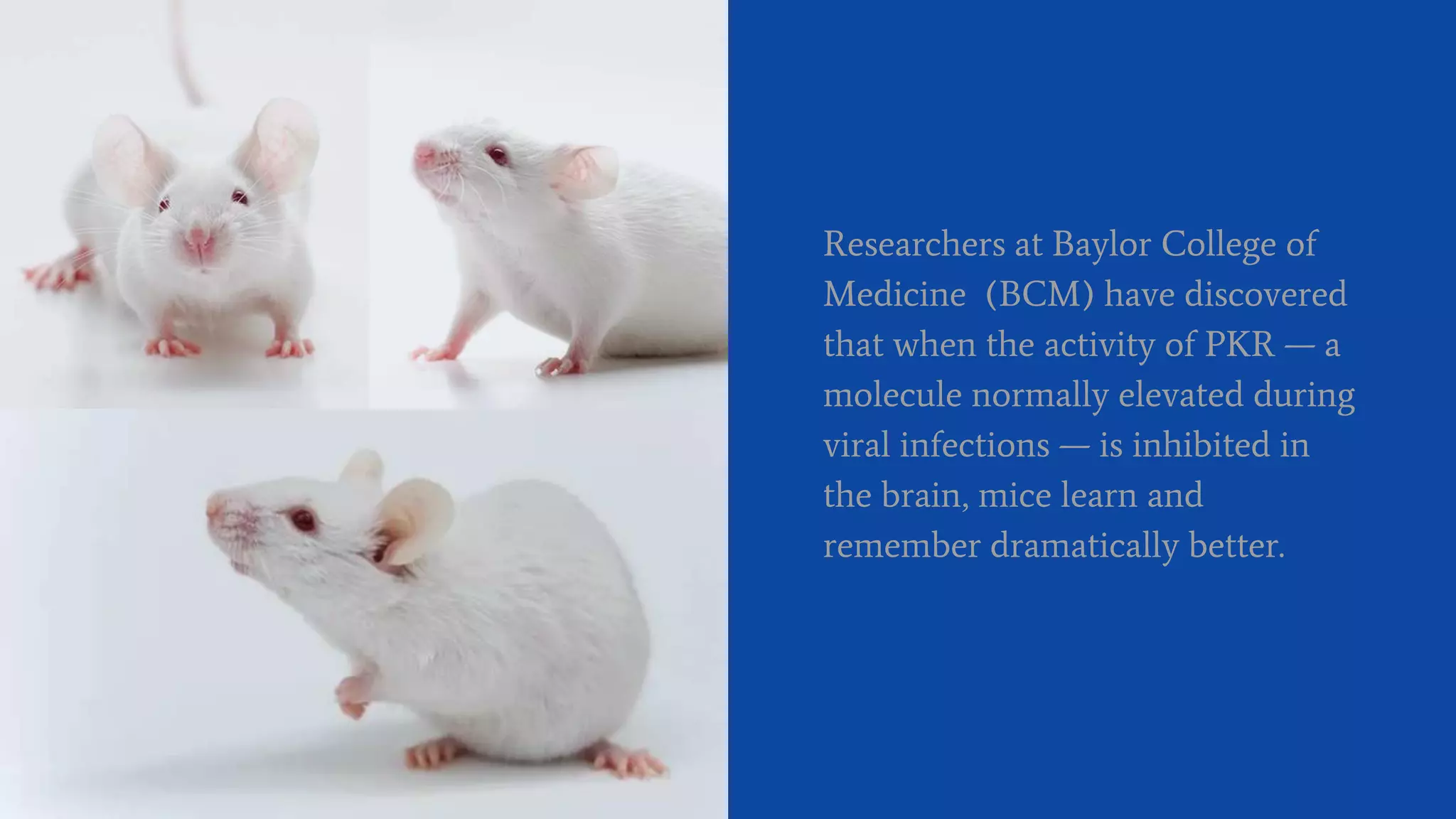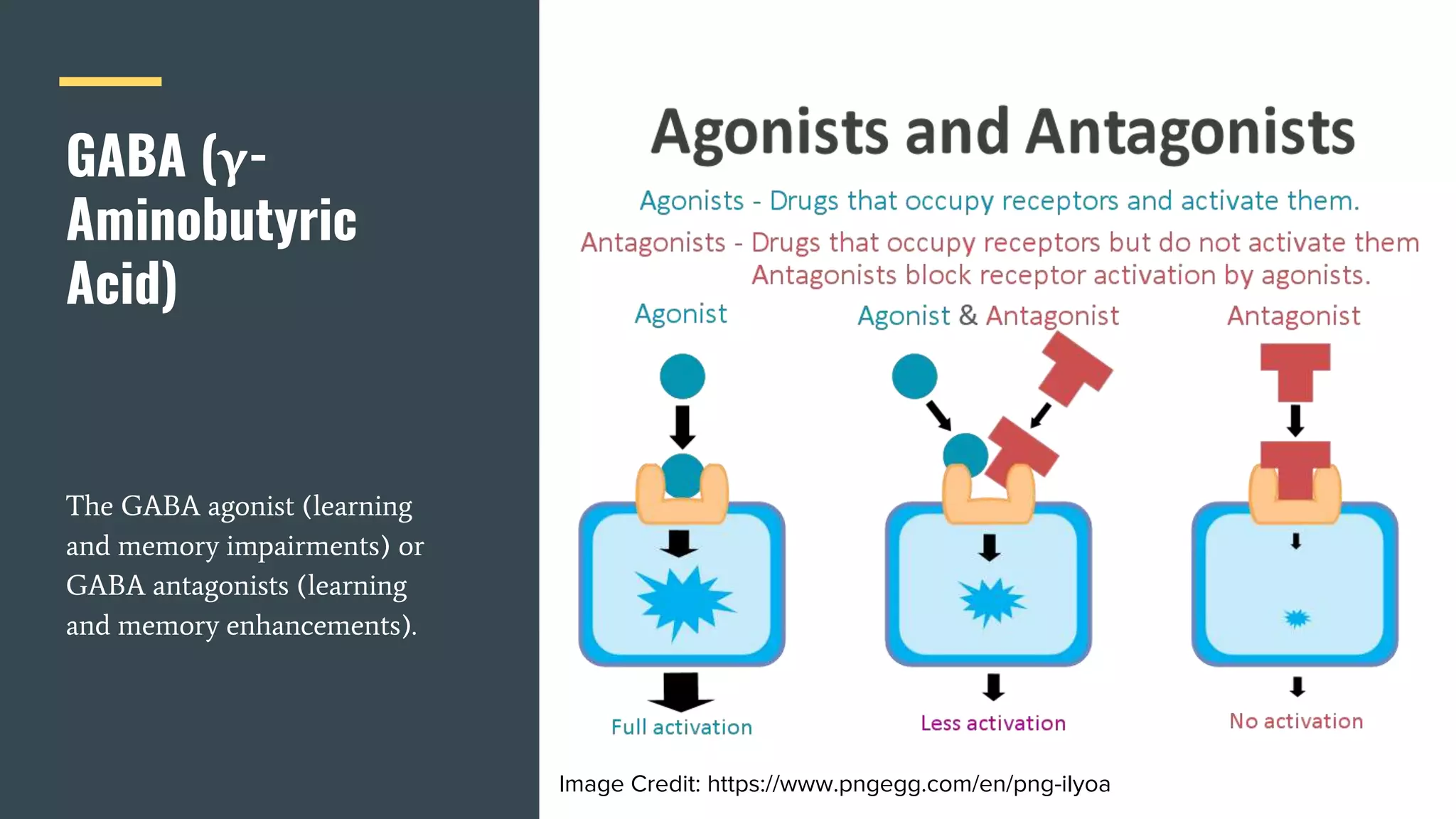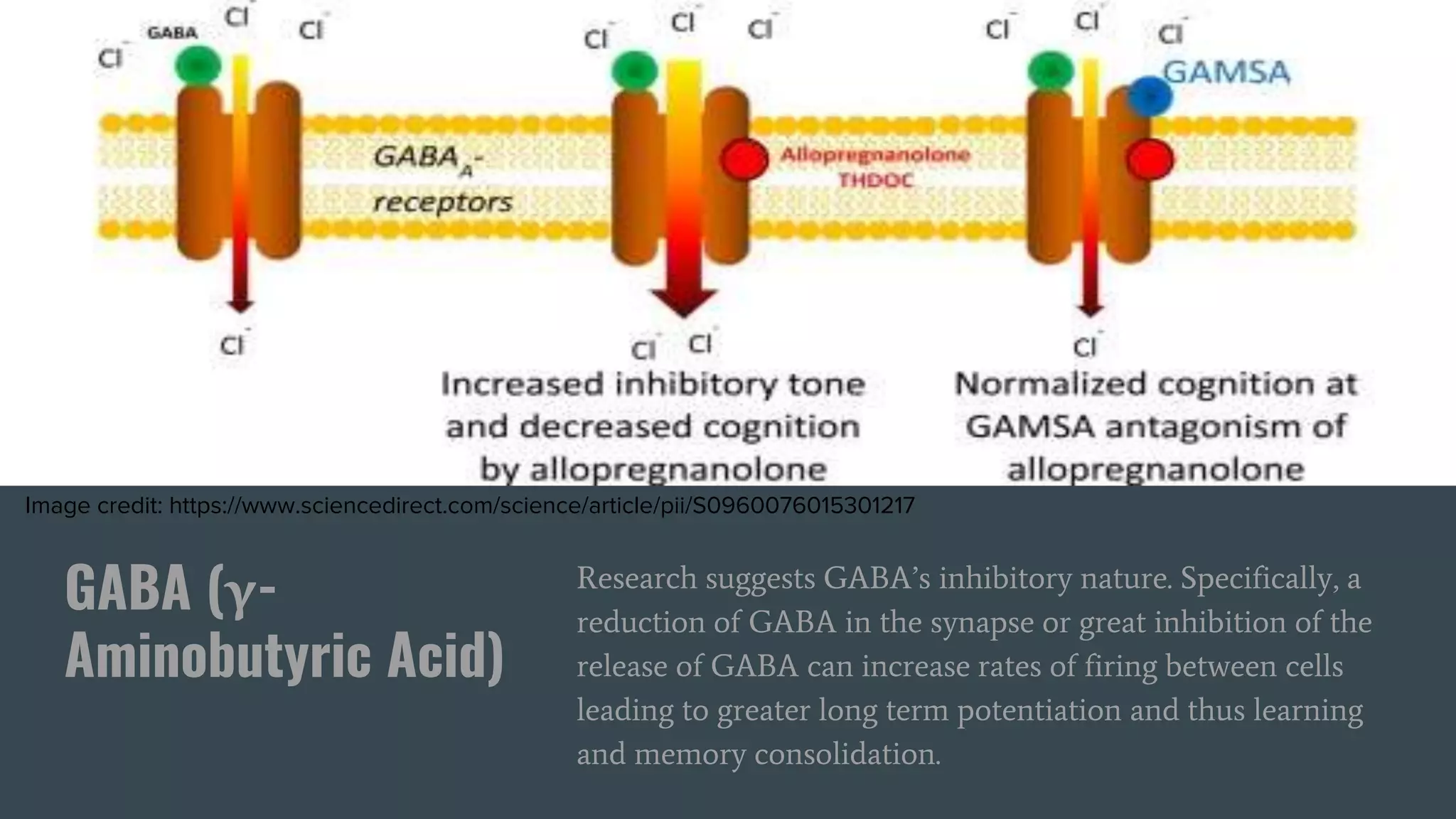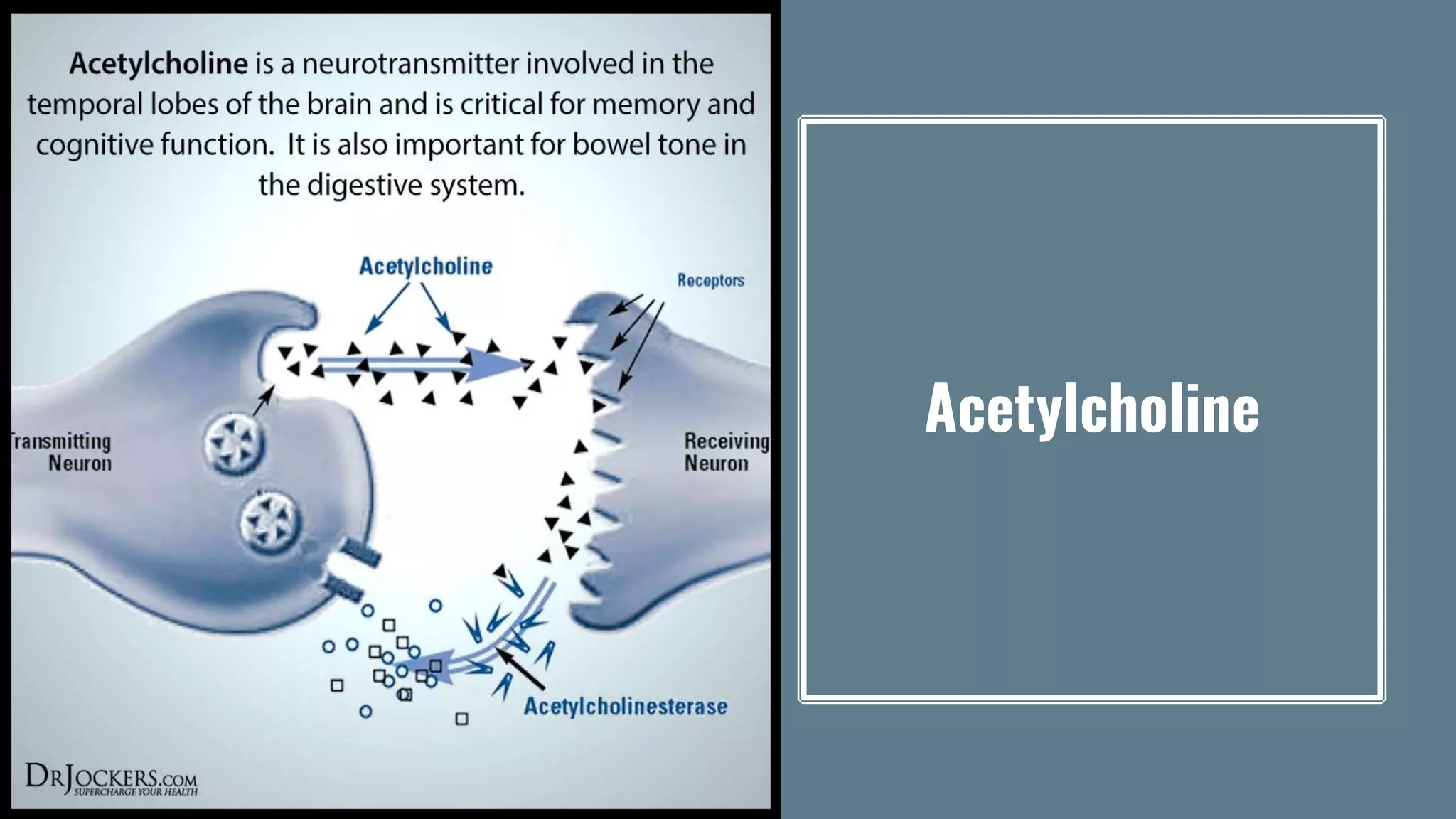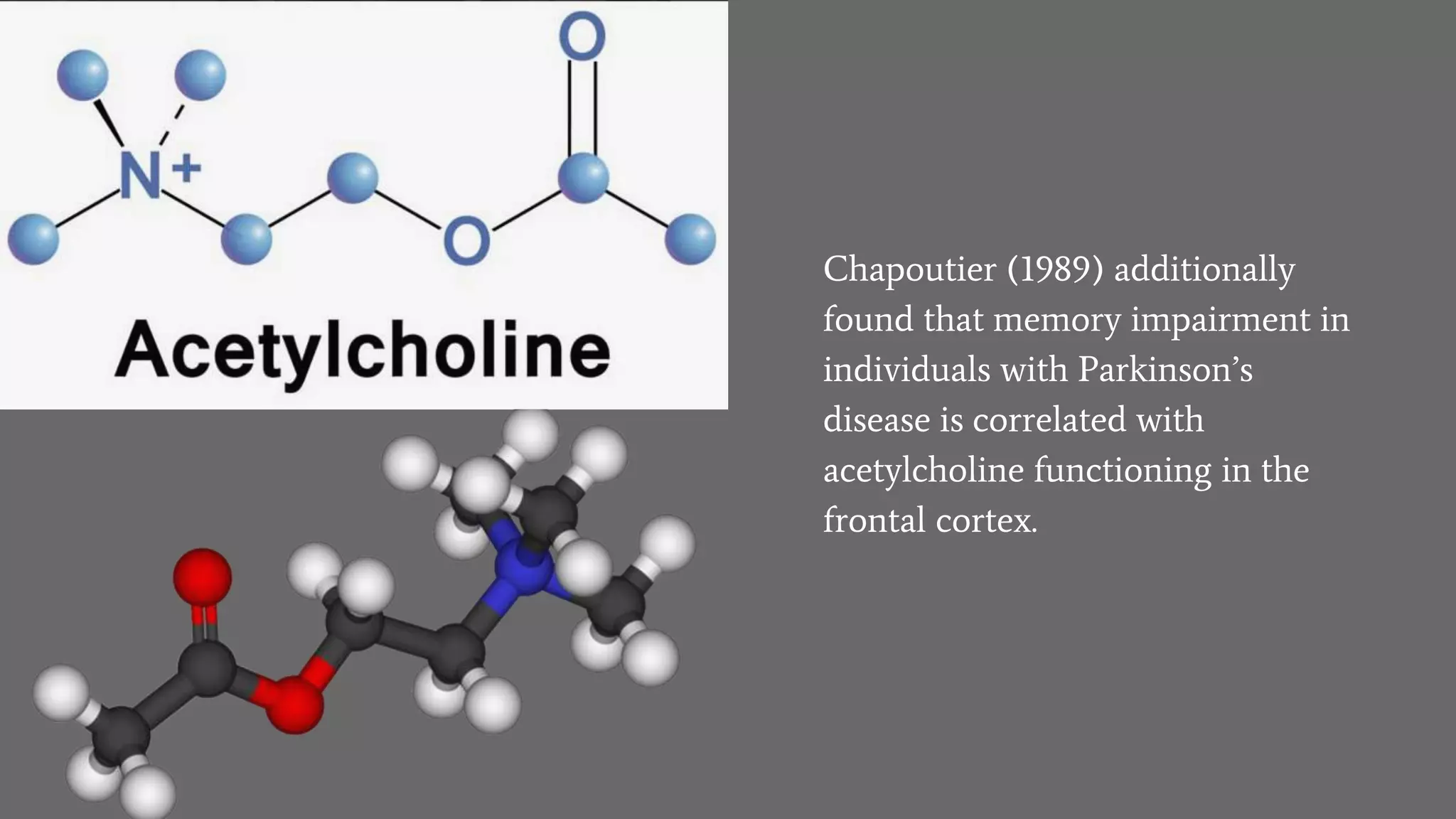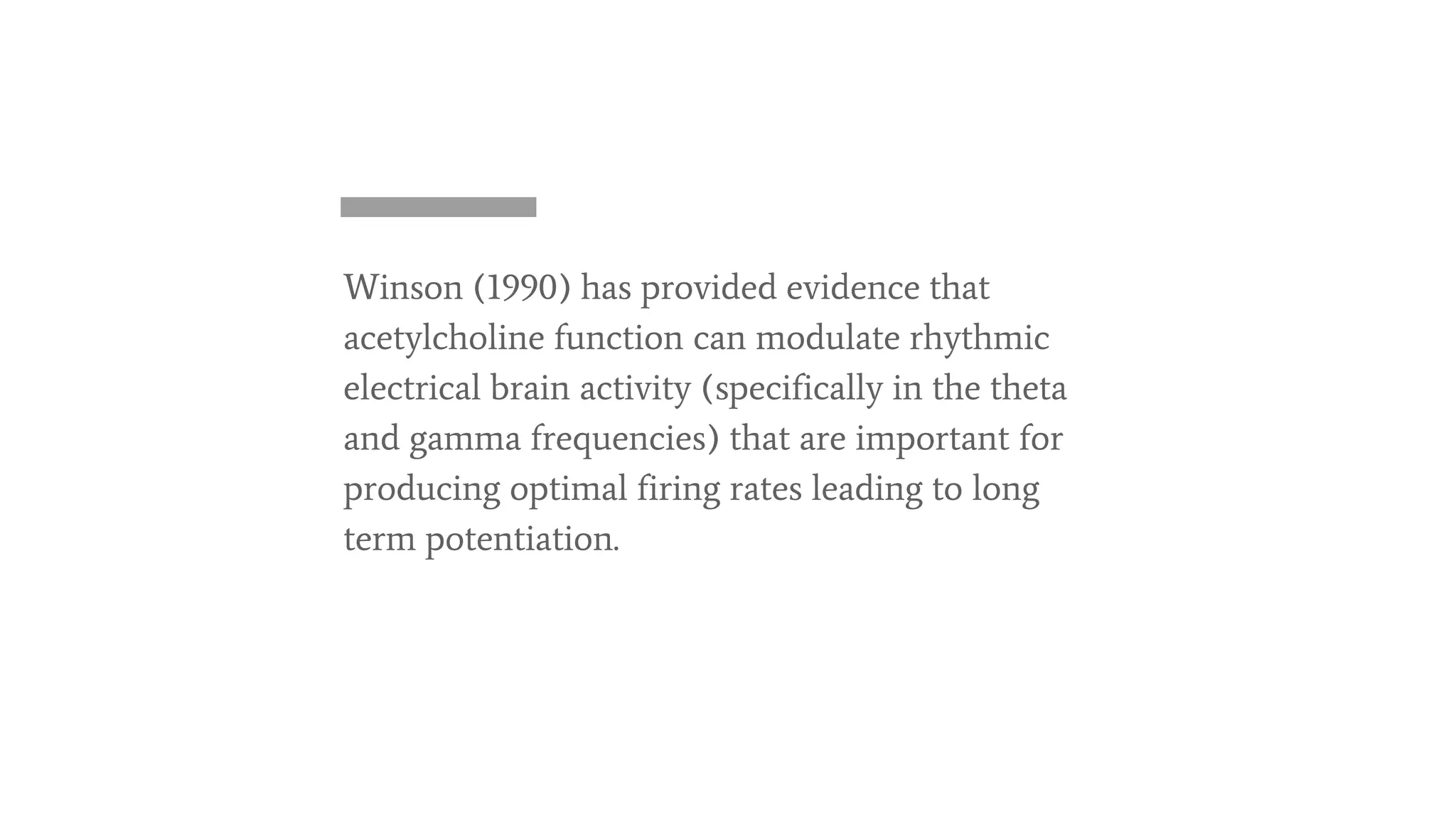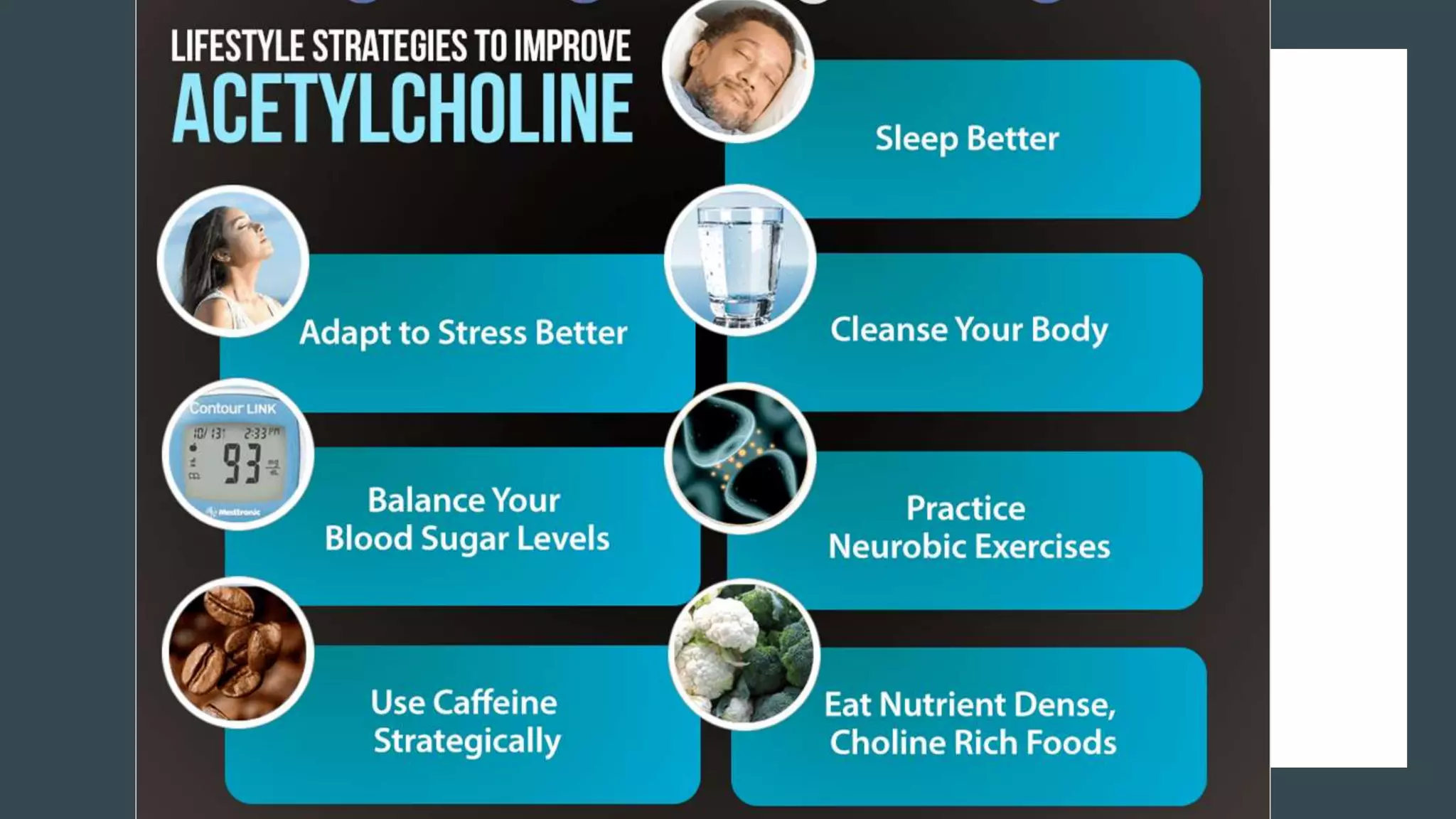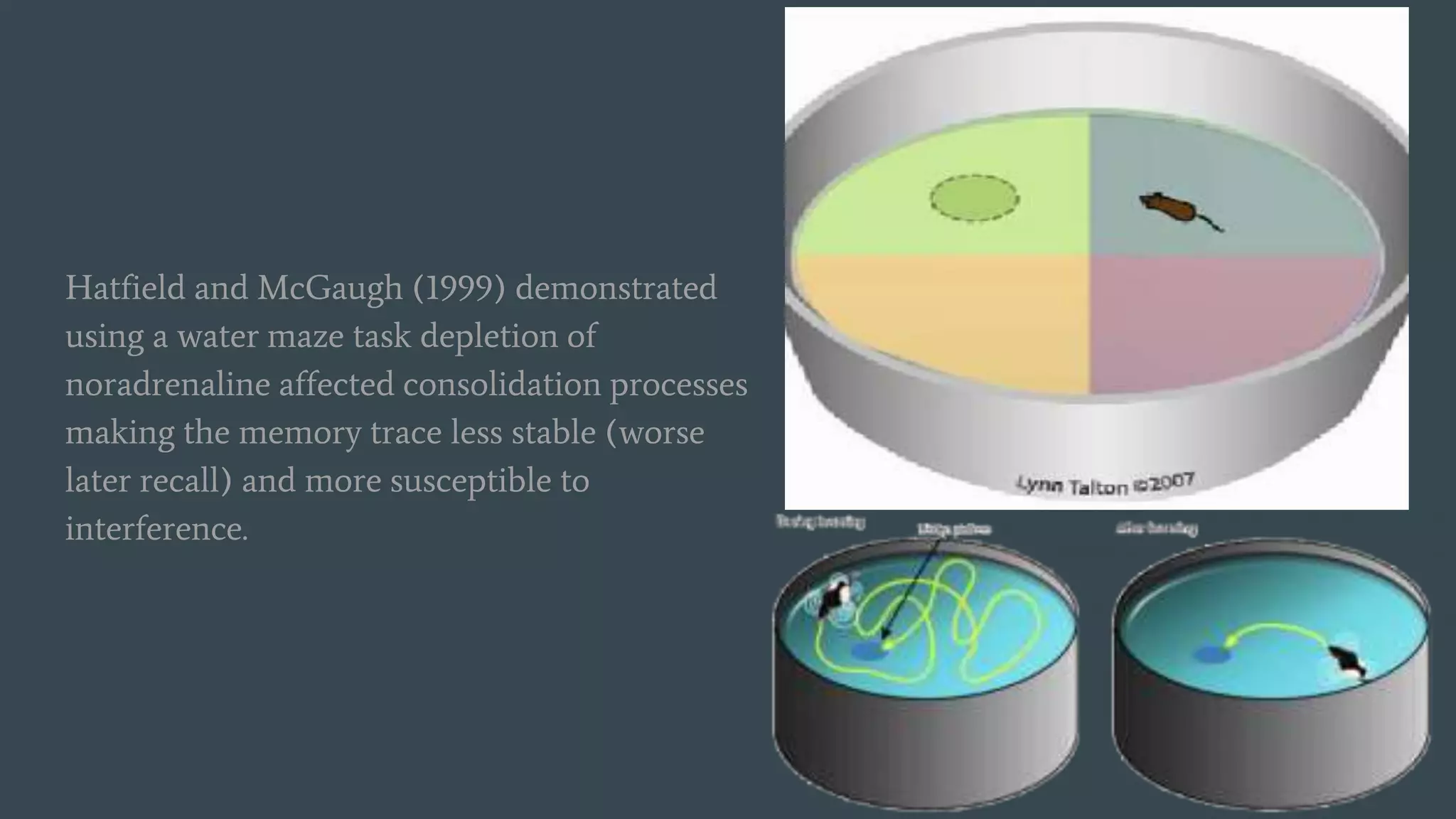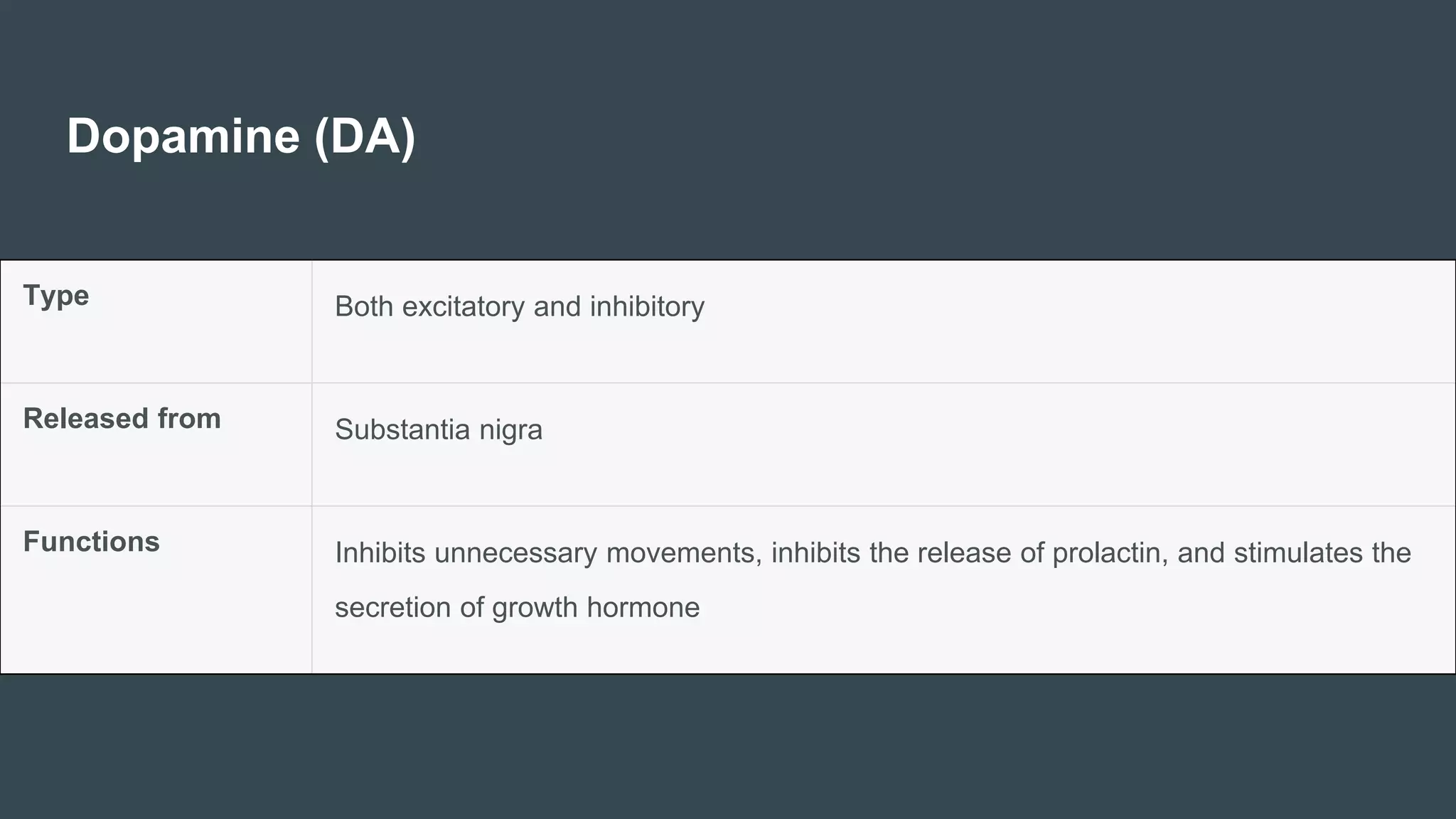This document provides information about neurotransmitters from a presentation by Dr. Suresh Kumar Murugesan. It discusses key neurotransmitters like glutamate and GABA. Glutamate is an excitatory neurotransmitter that plays an important role in learning and memory formation. GABA is an inhibitory neurotransmitter that reduces neuronal excitability. The document also outlines the major neurotransmitter systems in the brain and criteria for identifying neurotransmitters.





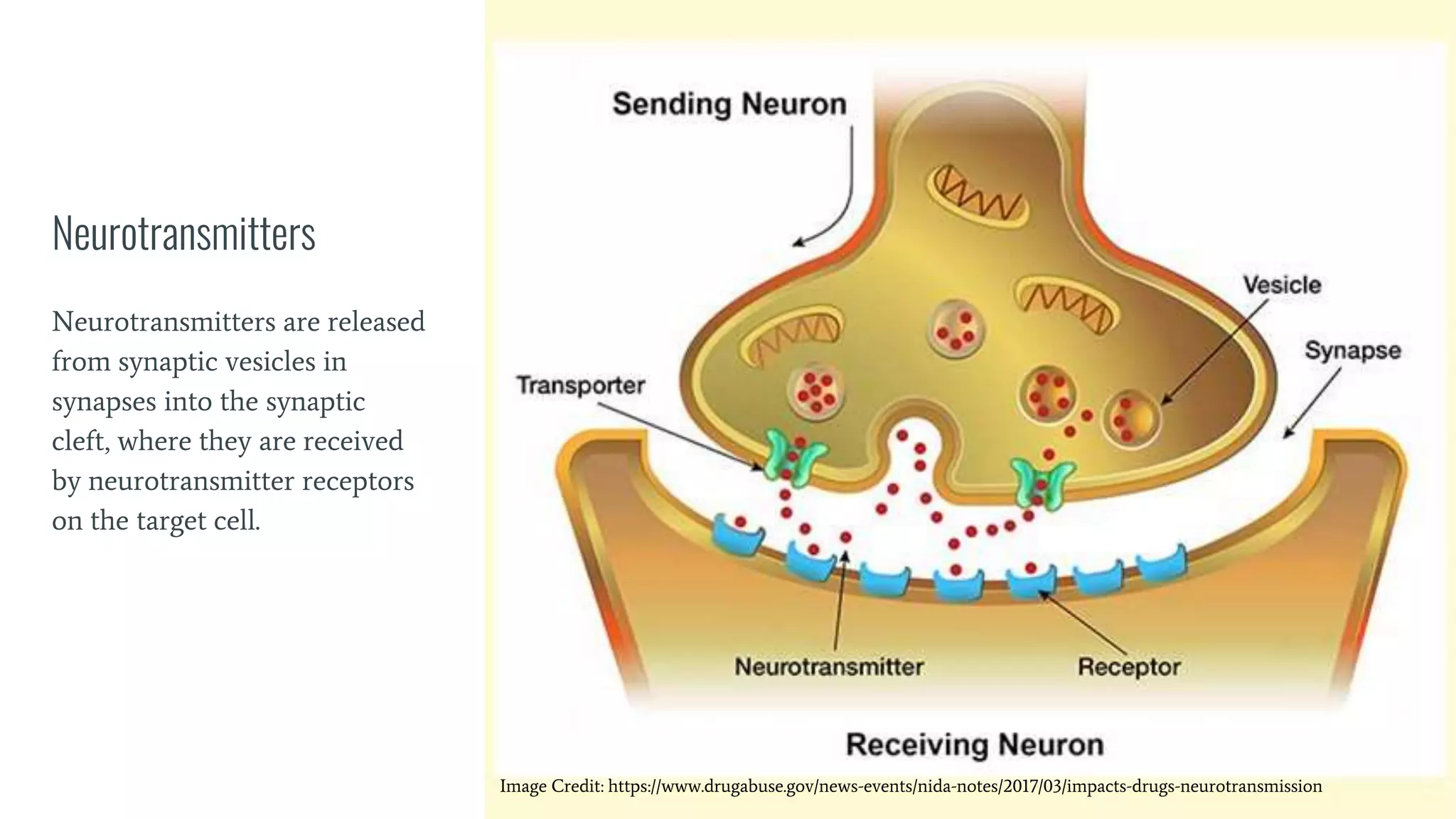
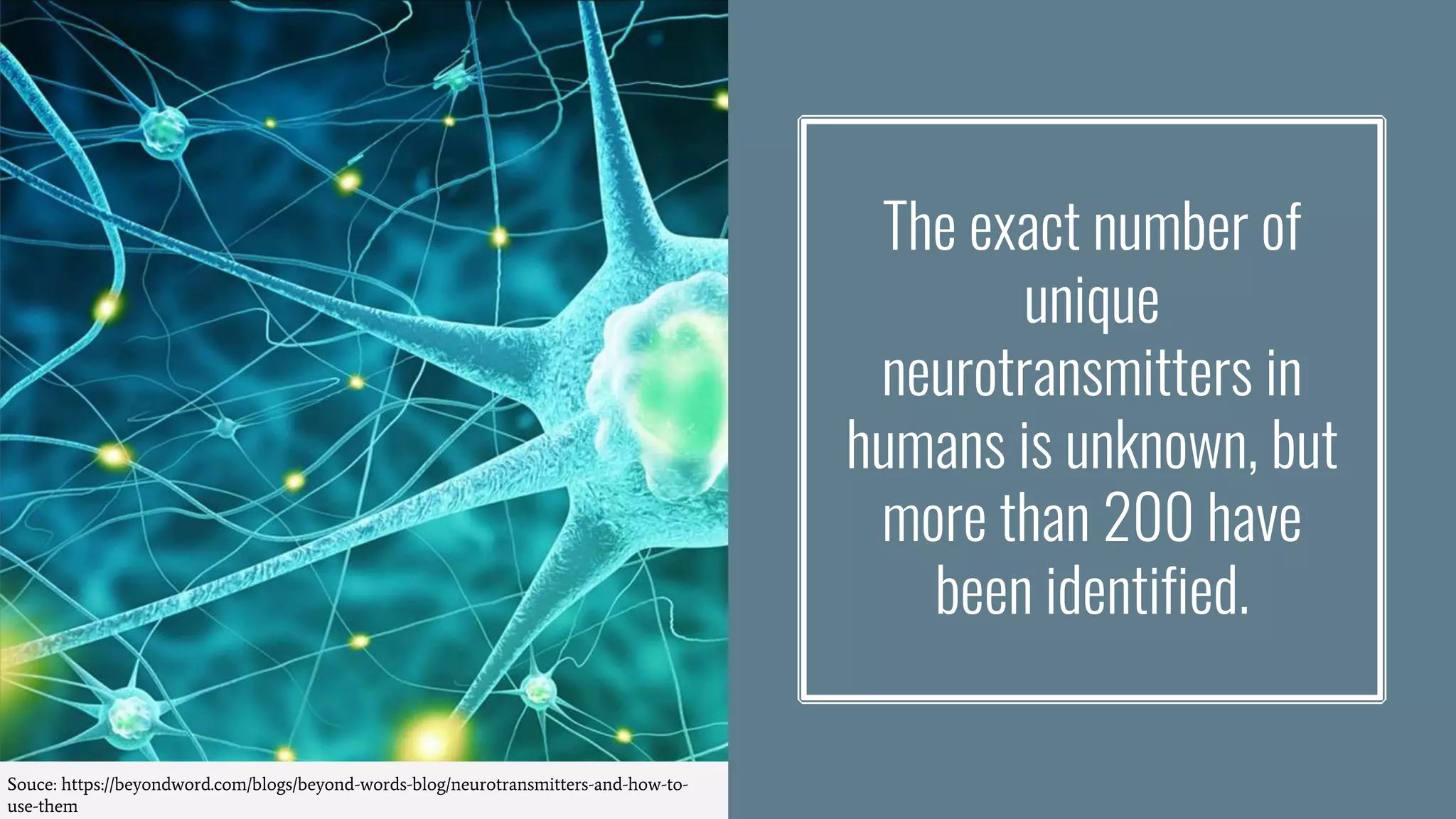


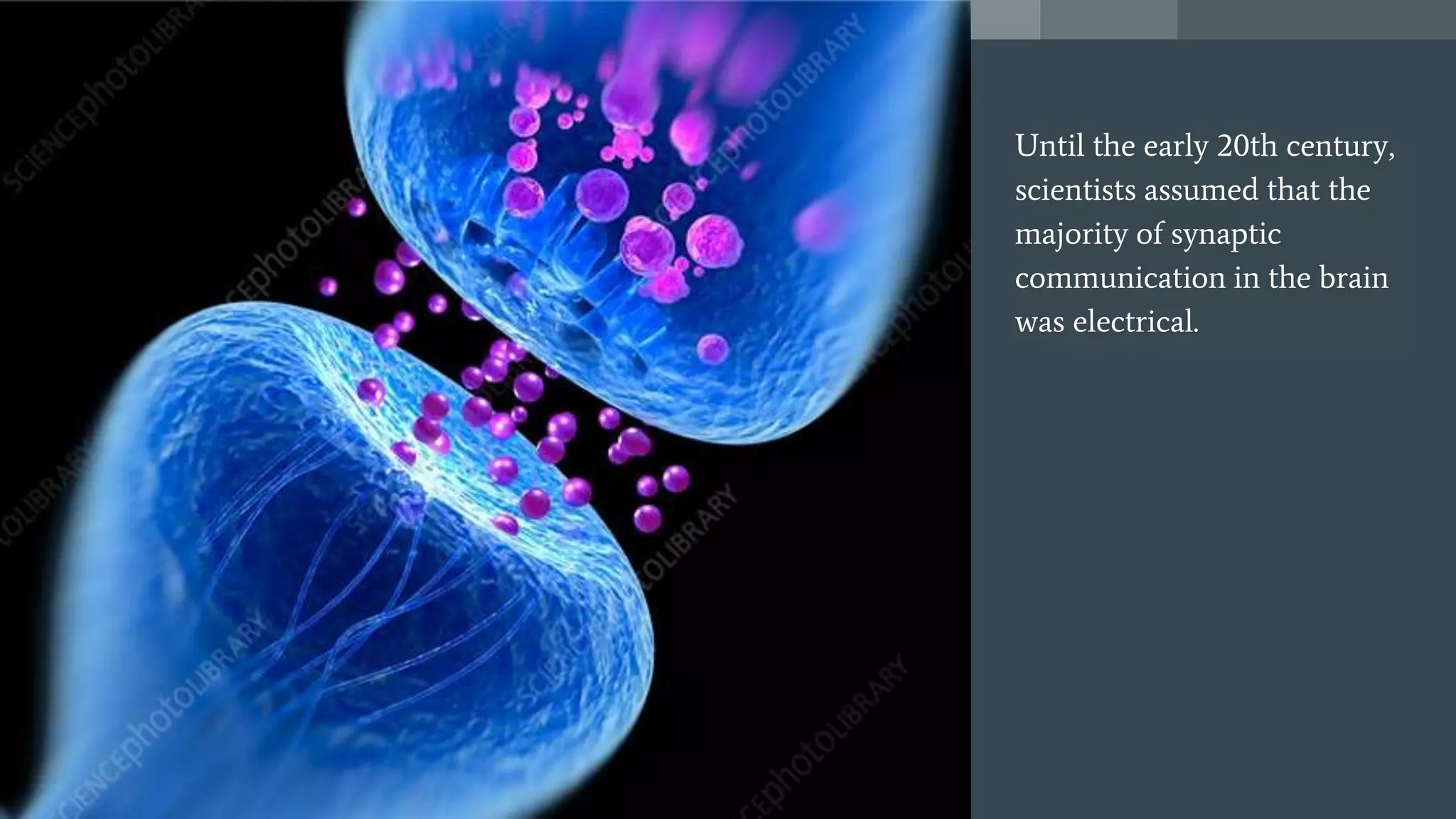



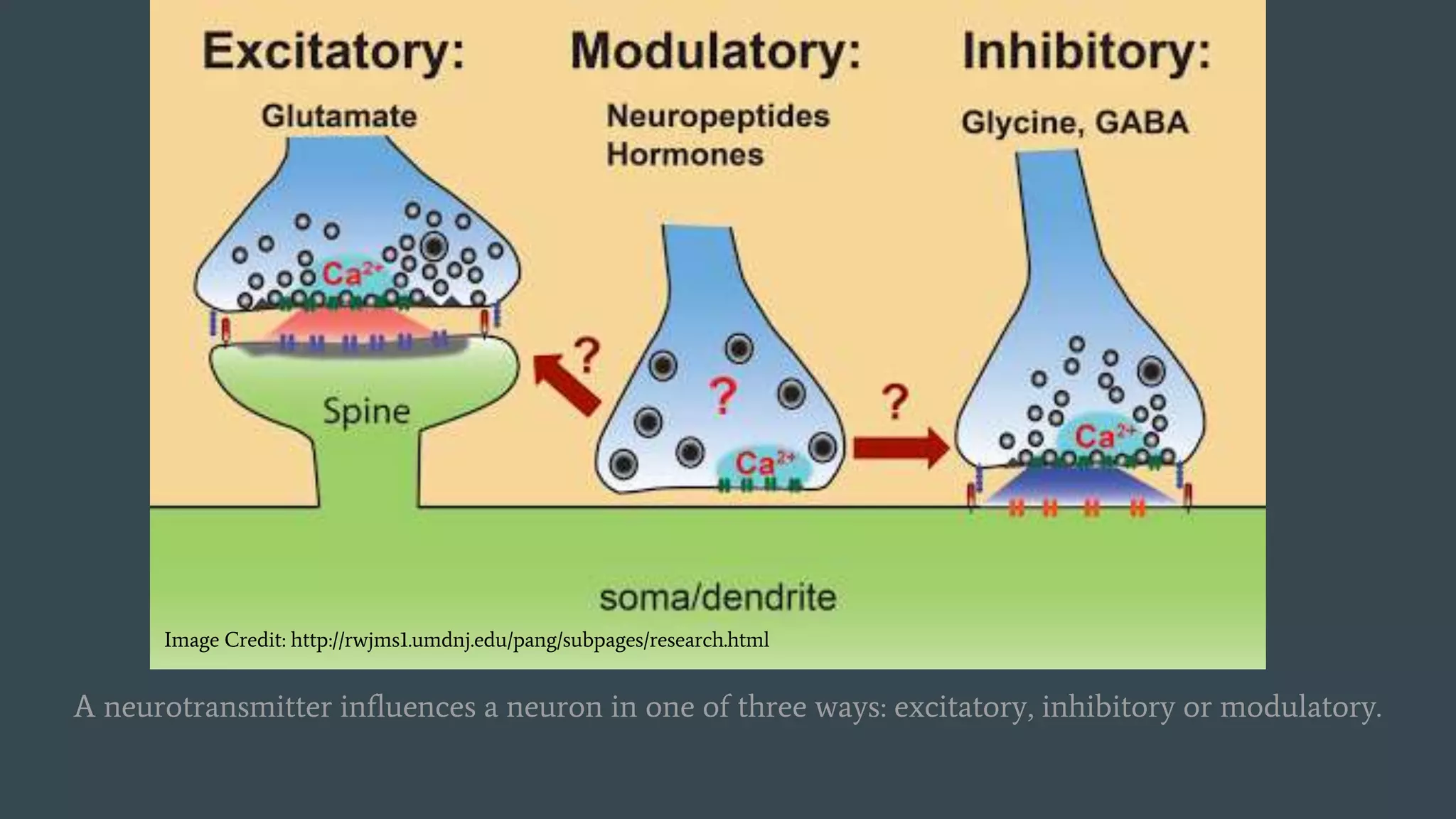
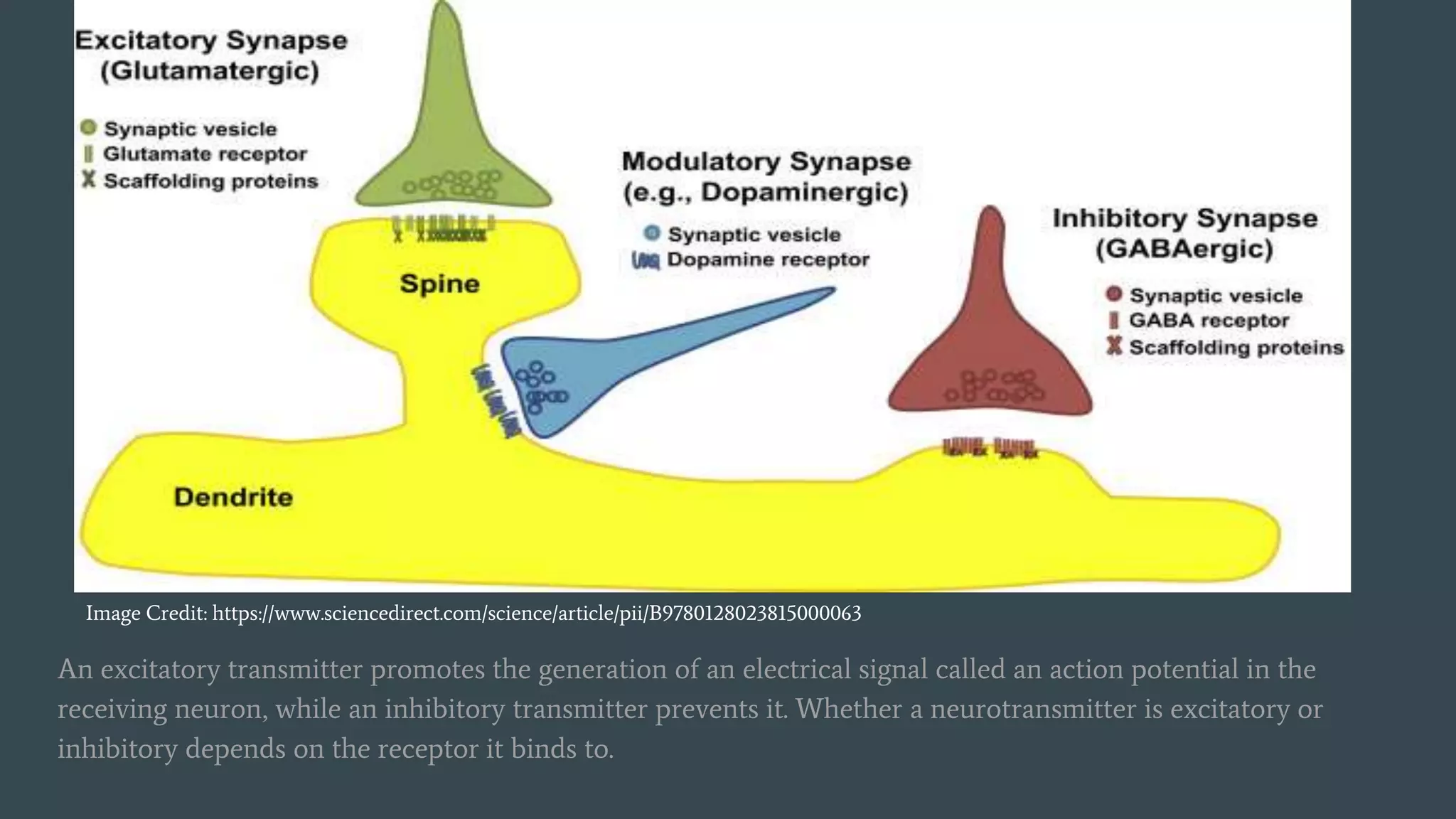
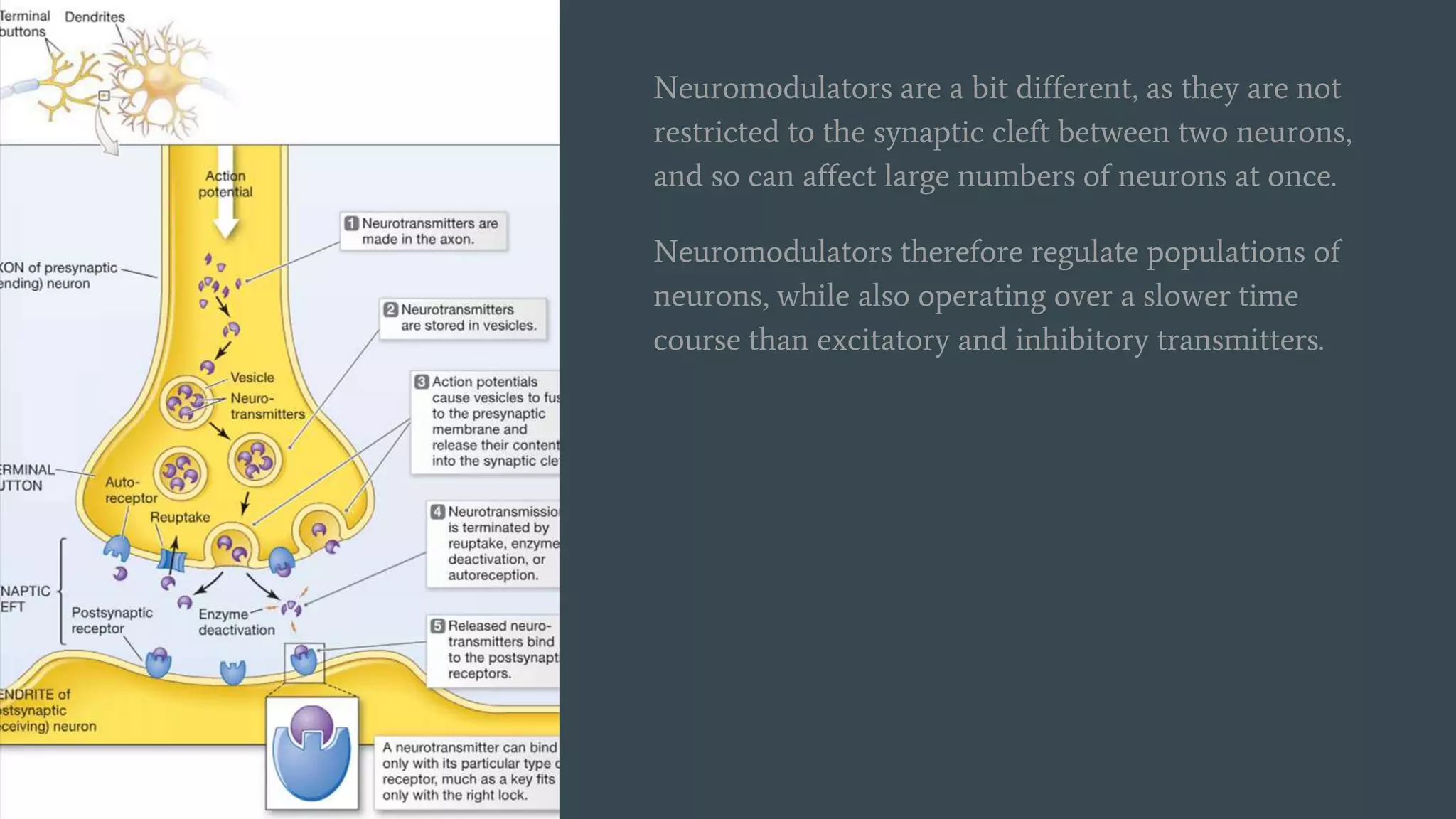
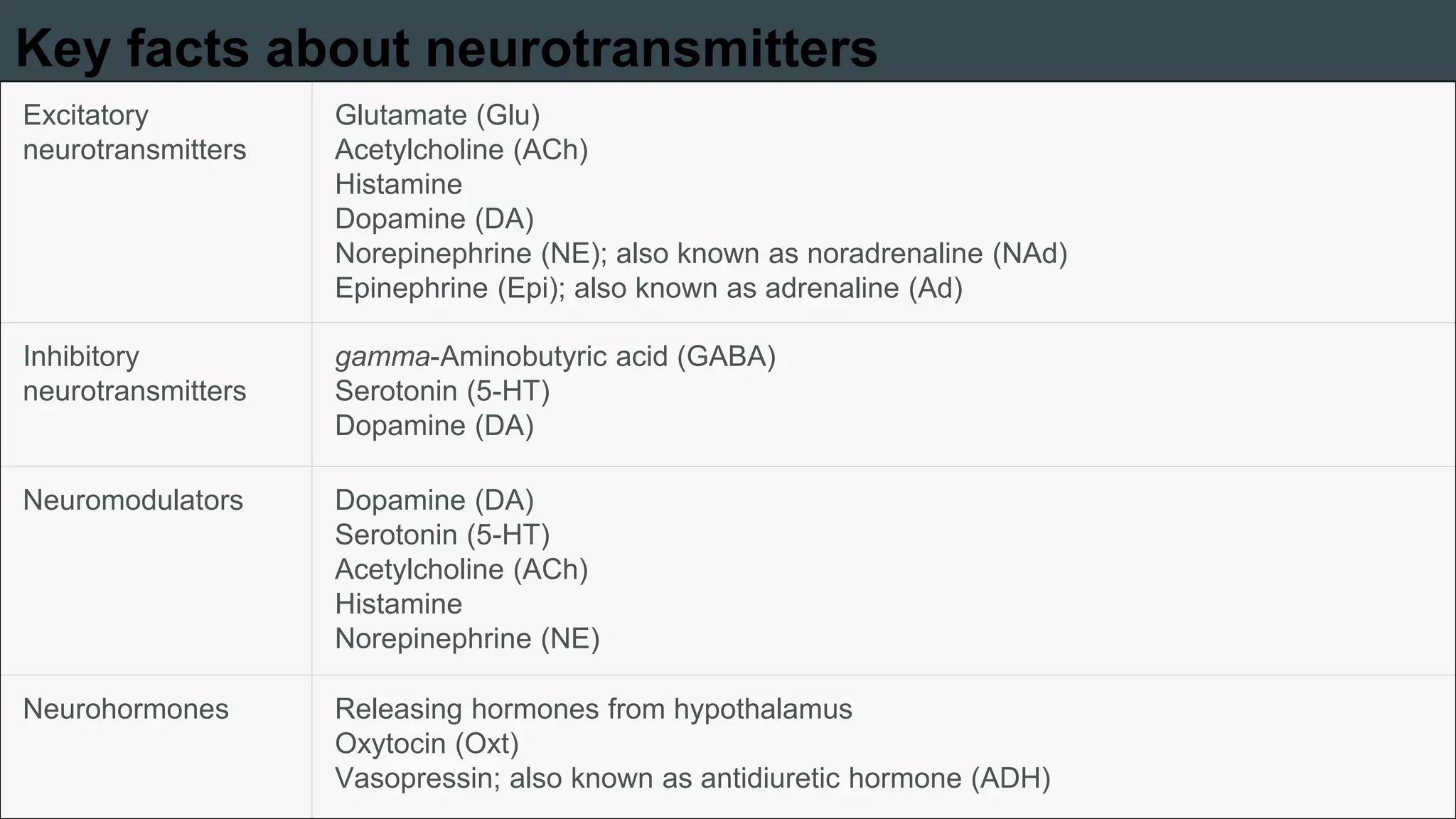
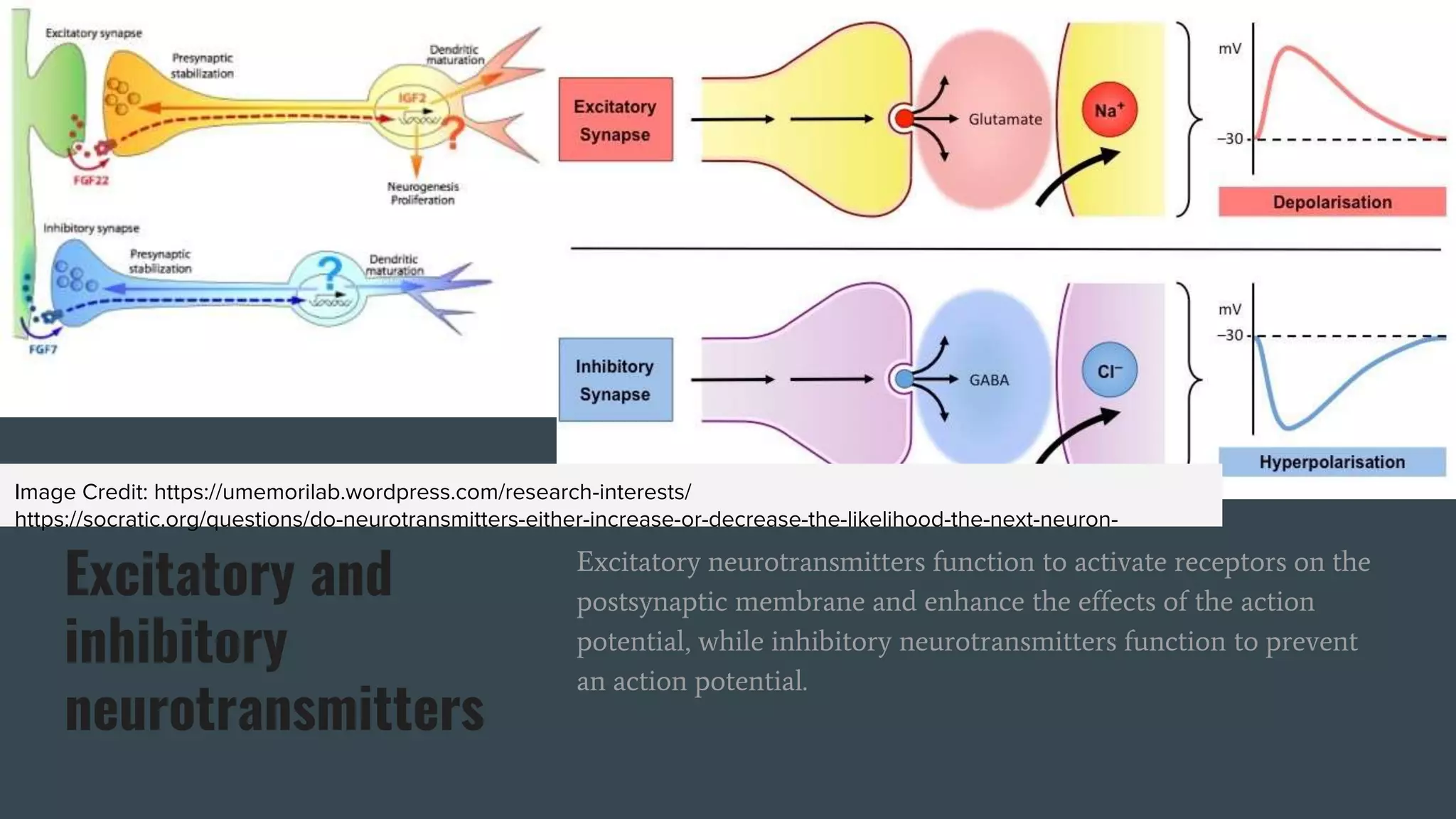


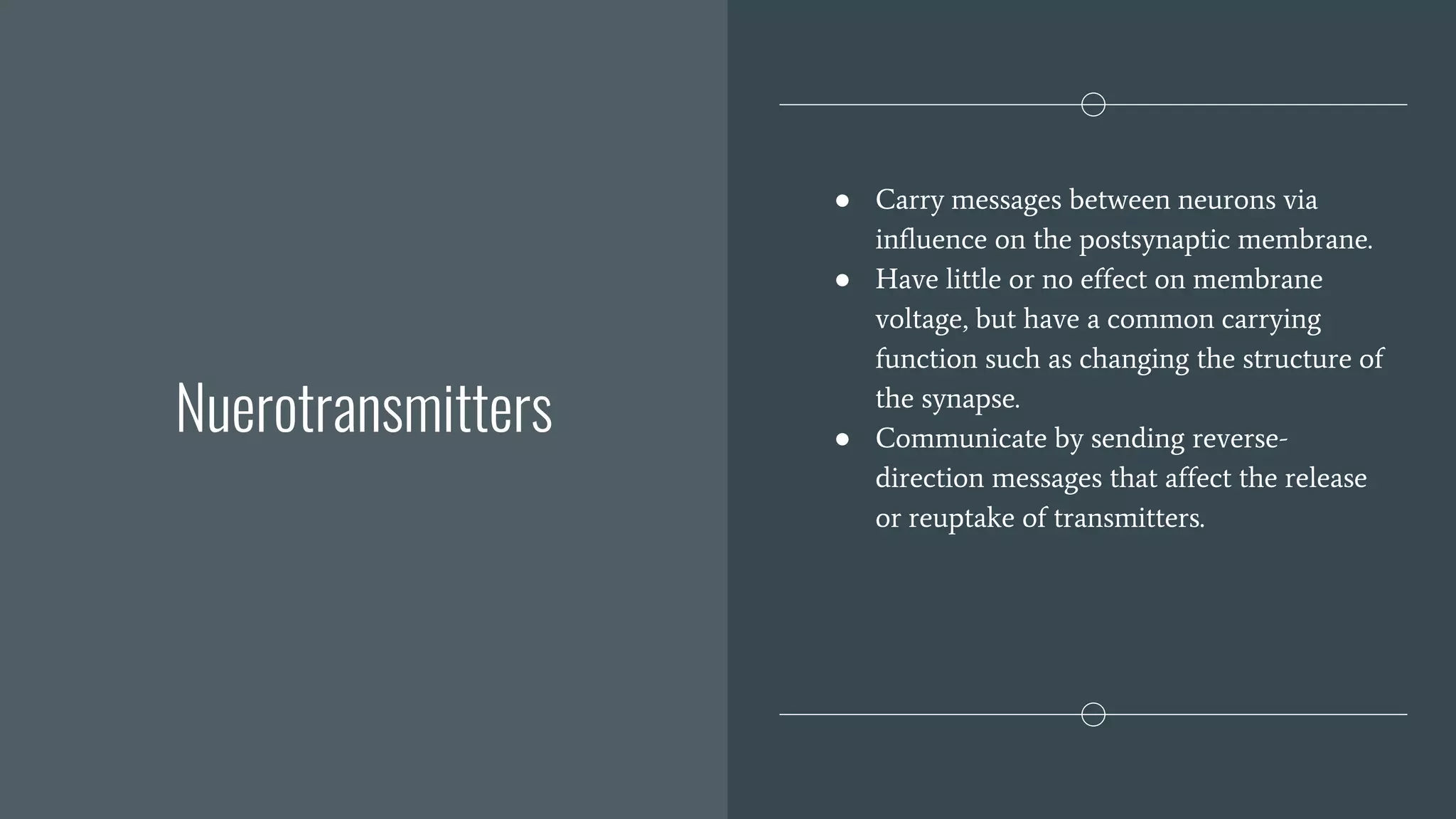
![Types of Neurotransmitters
There are many different ways to classify neurotransmitters. Dividing them into amino acids, peptides, and
monoamines is sufficient for some classification purposes.[9]
Major neurotransmitters:
● Amino acids: glutamate,[10] aspartate, D-serine, gamma-Aminobutyric acid (GABA),[nb 1] glycine
● Gasotransmitters: nitric oxide (NO), carbon monoxide (CO), hydrogen sulfide (H2S)
● Monoamines: dopamine (DA), norepinephrine (noradrenaline; NE, NA), epinephrine (adrenaline),
histamine, serotonin (SER, 5-HT)
● Trace amines: phenethylamine, N-methylphenethylamine, tyramine, 3-iodothyronamine,
octopamine, tryptamine, etc.
● Peptides: oxytocin, somatostatin, substance P, cocaine and amphetamine regulated transcript,
opioid peptides[11]
● Purines: adenosine triphosphate (ATP), adenosine
● Catecholamines: dopamine, norepinephrine (noradrenaline), epinephrine (adrenaline)
● Others: acetylcholine (ACh), anandamide, etc.](https://image.slidesharecdn.com/neurotransmitters-211126074102/75/Neurotransmitters-22-2048.jpg)





